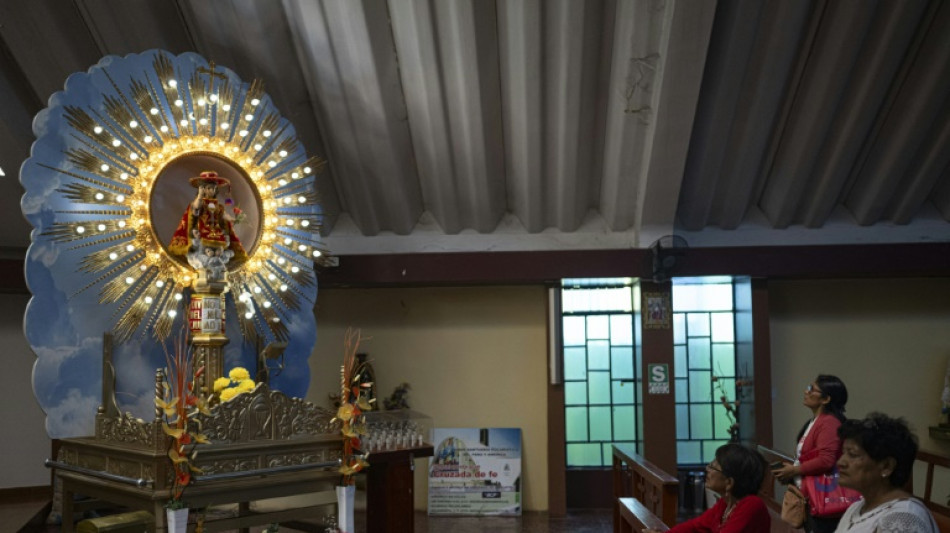
RIO
0.6900

In the small Peruvian town of Eten, the faithful flock every year to celebrate an apparent 17th century miracle featuring images of the child Jesus, a sacred phenomenon not yet recognized by the Vatican.
But the recent election of Pope Leo XIV, who for years served as a missionary in Peru, has rekindled hopes of official recognition -- and a shrine worthy of the Eucharistic miracle, the only one of its kind reported in the Andean country.
Robert Prevost, who became the first US-born pontiff last week, spent more than two decades in Peru. From 2015 to 2023, he was bishop of the diocese of Chiclayo, a city 15 kilometers (nine miles) from Eten on the northern coast.
"With this pope who lived here in Chiclayo, and who knows the subject well, they'll soon recognize us as a Eucharistic city," said optimist Catalino Puican.
In the main room of the 93-year-old's single-storey Eten house, an entire wall serves as an altar, as in many homes in the town of 14,000.
Statuettes of the Virgin Mary, candles, rosaries and portraits of the deceased bear witness to the local religious fervor.
It was in an ancient village founded near this site by the Spanish in the 16th century, a few hundred meters from windswept dunes, that the so-called Eucharistic Miracle of Eten is said to have taken place.
On June 2, 1649, an image of a young Jesus and three small hearts is believed to have appeared to dozens of faithful during a eucharist, a Catholic ceremony in which bread and wine -- representing the body and blood of Christ -- are consecrated.
A second image is said to have appeared weeks later, during another religious festival. The events inspired a passionate local devotion that continues to this day.
- 'A gift' for Peru -
Locals believe official recognition of the miracle could attract more devotees.
A small shrine now welcomes pilgrims to the ancient town, where a few ruins mark the site.
"Every week, people arrive with testimonies about miracles they have received, whether it is healing of illnesses, or curing infertility," said Eduardo Zarpan, a 26-year-old guide to the area.
Anxious to provide the site a more holy dimension, in 2019 Leo XIV, then bishop of the diocese, began the process of formally recognizing what locals believe occurred centuries ago.
"The Eucharistic miracle is a gift for all Peru," Prevost stated in 2022. "Building this new shrine is a task for all of us. It's a dream we want to make come true."
Veronique Lecaros, head of the theology department at Peru's Pontifical Catholic University, noted that the process "is a long one," as it involves "an investigation into how the miracle happened."
Its recognition ultimately would bring "great pride to the people and recognition of their faith -- as well as tourism and money," she told AFP.
In the town's modest St Mary Magdalene church, 72-year-old Blanca Chancafe prayed facing a statue representing the apparition of the child Jesus.
Wearing a traditional head covering, Christ is depicted at the center of rays evoking the Sun, a venerated divinity of the Mochica civilization that once flourished along Peru's northern coast.
Leo XIV "will contribute significantly" to the official recognition of the miracle, said Chancafe, a retired teacher. "We expect a lot from him."
Many hope a papal visit is in store. The elder Puican has no doubt Leo will make the trip to the diocese he once led.
"He won't be long in coming... I hope God will allow me to meet him as pope," said Puican, a retired merchant of straw hats, an emblematic craft of the town.
F.Prochazka--TPP